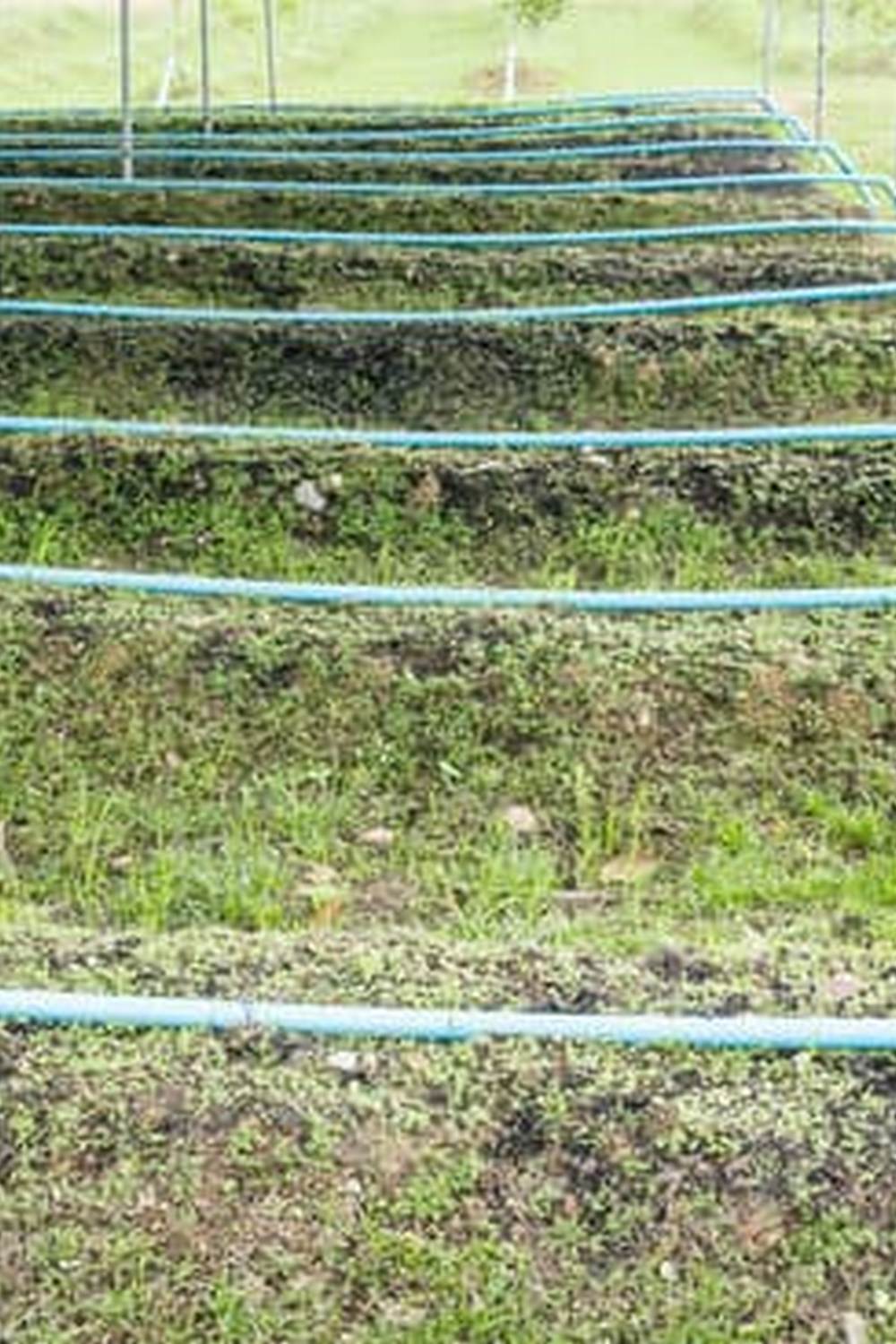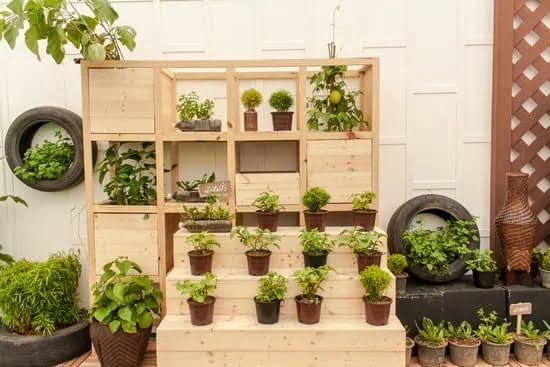Spring cover crops for vegetable gardens are an essential part of maintaining soil health and fertility, as well as controlling weeds and erosion. By planting cover crops in the spring, gardeners can improve their soil structure, provide nutrients for future plantings, and increase organic matter. Additionally, cover crops help to prevent weed growth and protect against soil erosion, making them a valuable asset for any vegetable garden.
When it comes to selecting the right cover crop, there are several options to consider such as clover, vetch, and rye. Each type of cover crop offers specific benefits that can enhance the overall health of vegetable gardens. Factors such as climate, soil type, and individual garden needs should be taken into account when deciding which cover crop will be most beneficial for a particular setup.
The use of spring cover crops can greatly contribute to sustainable garden management by improving soil fertility and structure. With proper maintenance and management techniques, these cover crops can enrich the soil’s health for future plantings while also supporting a more eco-friendly gardening approach. In this article, we’ll explore the various types of cover crops suitable for spring planting and how they can be integrated into vegetable garden planning for optimal results.
Types of Cover Crops to Consider for Spring Planting
When it comes to enhancing the health and fertility of your vegetable garden soil, spring cover crops play a crucial role. There are different types of cover crops that work well for spring planting, each offering unique benefits for your garden. Popular options include clover, vetch, and rye, all of which can significantly improve the condition of your vegetable garden soil.
Clover is a common choice for a spring cover crop because it has the ability to fix nitrogen in the soil, making it an excellent source of this essential nutrient for your vegetable plants. Vetch, on the other hand, is known for its ability to suppress weeds effectively due to its vigorous growth and dense foliage. Rye is another popular choice thanks to its extensive root system which helps prevent erosion and improves the structure of the soil.
In addition to these options, there are various other spring cover crops such as winter wheat, fava beans, and oats that can also be beneficial for vegetable gardens. Each type of cover crop offers different advantages such as weed suppression, soil enrichment, erosion control, and improved overall soil health. It’s essential to select a cover crop based on your specific garden needs and consider factors like climate and soil type when making your decision.
| Cover Crop | Benefits |
|---|---|
| Clover | Nitrogen fixation and improved soil fertility |
| Vetch | Effective weed suppression with vigorous growth |
| Rye | Prevents erosion and enhances soil structure with its extensive root system |
How to Select the Right Cover Crop for Your Garden
When it comes to selecting the right spring cover crops for your vegetable garden, there are several factors to consider. The climate of your region, the type of soil in your garden, and the specific needs of your individual vegetable plants all play a crucial role in determining which cover crop will be most beneficial for your garden setup.
First and foremost, it’s important to consider the climate of your region when choosing a cover crop for your vegetable garden. Some cover crops thrive in cooler temperatures, while others are better suited for warmer climates.
For example, legumes like clover and vetch are well-adapted to cooler spring weather, while grasses such as rye can tolerate a wide range of temperatures. By considering the climate of your region, you can select a cover crop that will grow vigorously and provide optimal benefits for your vegetable garden.
The type of soil in your garden is another crucial factor to take into account when selecting a cover crop. Different cover crops have varying abilities to improve soil structure, add nutrients, and increase organic matter.
For example, legumes like clover have nitrogen-fixing properties that can help enrich the soil with this essential nutrient, while grasses like rye have deep root systems that can break up compacted soil and prevent erosion. By understanding the specific needs of your soil, you can choose a cover crop that will address those needs and enhance the overall health and fertility of your garden.
Lastly, it’s important to consider the specific needs of your individual vegetable plants when selecting a cover crop for your garden. Some cover crops may provide additional benefits such as weed suppression or pest control that can directly impact the success of your vegetable plantings.
Additionally, certain vegetables may benefit from specific nutrients or soil improvements provided by certain types of cover crops. By taking these factors into consideration, you can choose a cover crop that will complement and support the growth of your vegetable plants throughout the spring season.
| Factor | Considerations |
|---|---|
| Climate | Different cover crops thrive in different temperature ranges |
| Soil Type | Cover crops have varying abilities to improve soil structure and add nutrients |
| Vegetable Needs | Cover crops should support the growth and successof individual vegetables |
Selecting the Right Spring Cover Crop For
Your Vegetable Garden Involves Careful Consideration
Of Various Factors Such as Climate,
soil type, and individual plant needs.
By Taking These Factors Into Account,
Gardeners Can Ensure That Their Selected
Cover Crop Provides Maximum Benefits
And Support for Their Overall
vegetable gardening efforts.
Benefits of Using Spring Cover Crops for Vegetable Gardens
Spring cover crops for vegetable gardens offer numerous benefits that can significantly improve the health and productivity of your garden. By incorporating cover crops into your spring garden planning, you can promote soil fertility, suppress weeds, control erosion, and increase organic matter. Here are some of the key advantages of using spring cover crops for vegetable gardens:
1. Soil Structure Improvement: Cover crops such as clover and vetch have deep root systems that help break up compacted soil, improving its structure and aeration. This allows for better water infiltration and retention, promoting overall soil health.
2. Nutrient Addition: Certain cover crops like rye have the ability to scavenge excess nutrients in the soil, preventing leaching and making them available for future plantings. Additionally, when cover crops are turned over into the soil, they release valuable nutrients as they decompose.
3. Weed Suppression: Spring cover crops create a dense canopy that shades the soil, effectively suppressing weed growth. This can reduce the need for manual weeding and minimize competition between weeds and your vegetable plants.
Incorporating spring cover crops into your vegetable garden is a sustainable practice that not only benefits your current crop but also enriches the soil for future plantings. By carefully selecting the right cover crop based on your specific garden needs and planting it at the appropriate time, you can ensure a healthier and more productive vegetable garden in the long run.
When and How to Plant Spring Cover Crops
Spring is an important time for vegetable gardeners to consider planting cover crops to improve soil health and fertility. Cover crops are a crucial component of sustainable gardening practices, providing benefits such as weed suppression, erosion control, and nutrient retention. When and how to plant spring cover crops for vegetable gardens requires careful consideration and planning to maximize their effectiveness.
When it comes to selecting the right cover crop for your garden in the spring, there are several options to choose from. Some popular choices include clover, vetch, and rye, each with its own unique benefits for vegetable gardens. Clover, for example, is excellent for fixing nitrogen in the soil, while vetch helps suppress weeds and adds organic matter. Rye is known for its ability to prevent erosion and scavenge nutrients.
When deciding on which cover crop to plant in your vegetable garden, it’s essential to take into account factors such as climate, soil type, and specific garden needs. Consider the goals you have for your garden and select a cover crop that aligns with those objectives. Whether you need to improve soil structure or add nutrients to the soil, there is a suitable cover crop option for every garden setup.
To successfully plant spring cover crops in your vegetable garden, it’s important to follow a few key steps. First, ensure that the area where you plan to plant the cover crop is free of any debris or existing vegetation. Prepare the soil by loosening it with a rake or hoe and adding any necessary amendments or fertilizers.
Then carefully sow the cover crop seeds according to the recommended depth and spacing. Regularly water and maintain the cover crops as they grow throughout the spring season.
Incorporating spring cover crops into your vegetable garden can significantly enhance soil health and overall garden productivity. By carefully selecting the right cover crop based on your specific gardening needs and following proper planting techniques, you can enjoy improved soil structure and increased organic matter in preparation for future plantings in your vegetable garden beds.
Maintaining and Managing Spring Cover Crops
Tips for Successful Growth
To ensure a successful growth of spring cover crops for vegetable gardens, it is essential to keep the soil moist but not waterlogged. Adequate moisture will support germination and initial growth, but standing water can lead to rot and disease. Additionally, it is important to monitor the cover crop regularly to make sure it is not outcompeting the vegetables or becoming invasive. If necessary, consider thinning the cover crop to maintain a healthy balance in the garden.
Proper Management for Maximum Benefits
One key aspect of managing spring cover crops is deciding when and how to terminate them. This process may involve mowing, tilling, or using a cover crop roller-crimper to flatten them without disturbing the soil. The timing of termination is crucial as it affects the decomposition rate and nutrient release of the cover crop residues. Plan ahead and choose an appropriate method for your specific garden needs and preferences.
Utilizing Cover Crop Residues
Once terminated, the residues from spring cover crops can be left on the surface to serve as mulch or incorporated into the soil as green manure. This organic matter improves soil structure, adds nutrients, and enhances moisture retention. In addition, as they decompose, these residues contribute to increased microbial activity in the soil, promoting overall fertility and health. Consider these options when managing your spring cover crops to maximize their benefits for future vegetable plantings in your garden.
Cover Crop Rotation and Integration Into Vegetable Garden Planning
Incorporating cover crops into a crop rotation plan for vegetable gardens is a crucial aspect of sustainable garden management. By strategically alternating between planting cover crops and vegetable crops, gardeners can maintain soil health and fertility while reducing the risk of soil erosion and weed infestations.
Benefits of Cover Crop Rotation
Rotating cover crops with vegetable plantings offers numerous benefits for the overall health and productivity of the garden. One of the key advantages is that cover crops help break disease cycles by suppressing soil-borne pathogens and pests.
Additionally, different types of cover crops can add specific nutrients to the soil, thus improving its fertility without the need for synthetic fertilizers. Moreover, by planting leguminous cover crops like clover and vetch, gardeners can enhance soil nitrogen levels through nitrogen fixation, creating a more balanced ecosystem within their vegetable gardens.
Implementation Strategies
When implementing cover crop rotation in vegetable garden planning, it is essential to consider factors such as climate, soil type, and specific garden needs. Gardeners should choose cover crops that not only benefit the soil but also complement the subsequent vegetable crop in terms of nutrient requirements and growth habits.
For example, a heavy-feeding summer vegetable such as tomatoes may benefit from a preceding cover crop that adds substantial organic matter to the soil while fixing nitrogen. Additionally, planners must take into account the timing needed for each stage of both cover crop growth and decomposition to ensure optimal integration with subsequent plantings.
Long-Term Soil Health
By integrating cover crop rotation into vegetable garden planning, gardeners are investing in the long-term health and sustainability of their growing space. Continual improvement in soil structure and fertility reduces reliance on chemical additives while creating an environment that supports healthy plant growth.
The incorporation of organic matter from decomposed cover crops enriches the soil with essential nutrients that contribute to robust harvests season after season. Furthermore, reduced erosion from established root systems aids in moisture retention and prevents nutrient runoff, all leading to a more resilient and productive garden ecosystem over time.
Harvesting and Incorporating Spring Cover Crops Into Your Vegetable Garden
In conclusion, spring cover crops play a crucial role in maintaining the health and fertility of vegetable gardens. By incorporating cover crops such as clover, vetch, and rye, gardeners can improve soil structure, suppress weeds, and control erosion. These benefits are essential for ensuring the success of future vegetable plantings and promoting sustainable garden management practices.
When selecting the right cover crop for a vegetable garden, it’s important to consider factors such as climate, soil type, and specific garden needs. Each type of cover crop offers unique advantages, so careful consideration is necessary to maximize the benefits for individual garden setups. Additionally, proper timing and methods for planting and maintaining cover crops are essential for their successful growth throughout the spring season.
Once spring cover crops have reached maturity, it’s time to harvest and incorporate them into the vegetable garden beds. This process not only enriches the soil with organic matter but also provides nutrients for future plantings.
By seamlessly integrating cover crops into vegetable garden planning, gardeners can ensure the long-term health and productivity of their gardens while minimizing the need for chemical inputs. Overall, utilizing spring cover crops is an effective and sustainable practice that benefits both the soil and future vegetable harvests.
Frequently Asked Questions
What Cover Crop Can Be Planted in Spring?
In spring, one popular cover crop to plant is clover. Clover can help improve soil health by fixing nitrogen and adding organic matter, making it a great choice for enhancing the soil during the growing season.
What Are the Best Cover Crops for Vegetable Gardens?
The best cover crops for vegetable gardens include legumes like peas and beans, as well as grains like rye and oats. These cover crops can add beneficial nutrients to the soil while suppressing weeds, making them ideal for vegetable garden plots.
Can You Plant Cover Crops With Vegetables?
Yes, you can plant cover crops with vegetables. In fact, planting cover crops alongside vegetables can have numerous benefits, such as improving soil structure, preventing erosion, and attracting beneficial insects. Just be sure to choose cover crops that won’t compete with your vegetables for resources.

If you’re looking to get into vegetable gardening, or are just looking for some tips on how to make your current garden better, then you’ve come to the right place! My name is Ethel and I have been gardening for years. In this blog, I’m going to share with you some of my best tips on how to create a successful vegetable garden.





